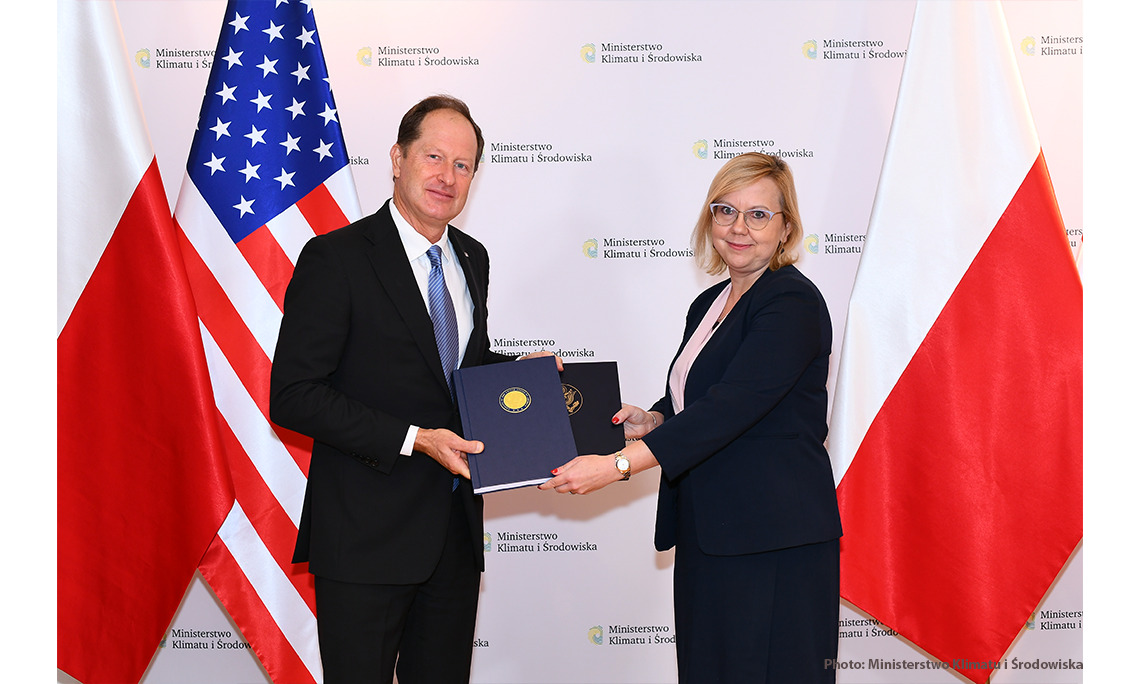Scientists have found a way to completely bypass the need for biological photosynthesis and create food that is independent of sunlight through artificial photosynthesis. This technology uses a two-step electrocatalytic process to convert carbon dioxide, electricity and water to acetate. Food-producing organisms then consume acetate in the dark to grow. A hybrid organic-inorganic system can increase the efficiency of converting sunlight into food, which is up to 18 times more efficient for some foods.
Photosynthesis has evolved in plants for millions of years to convert water, carbon dioxide, and energy from sunlight into the biomass and food we eat. However, this process is very inefficient, with only about 1% of the energy in sunlight reaching the plant. Researchers at UC Riverside and the University of Delaware have found a way to completely bypass the need for biological photosynthesis and create food that is independent of sunlight through artificial photosynthesis.
A study published in the journal Nature Food uses a two-step electrocatalytic process to convert carbon dioxide, electricity and water to acetate, a major component of vinegar. Food-producing organisms then consume acetate in the dark to grow. Together with solar panels to generate electricity for electrocatalysis, this hybrid organic-inorganic system can increase the efficiency of converting sunlight into food, which is up to 18 times more efficient for some foods.
“With our approach, we sought to identify a way to produce a novel food that could go beyond what is normally required by biological photosynthesis,” said Robert Jinkerson, an associate professor of chemical and environmental engineering at UC Riverside.
To integrate all components of the system, the output of the electrolyser was optimized to support the growth of food-producing organisms. Electrolysers are devices that use electricity to turn raw materials, such as carbon dioxide, into useful molecules and products. The amount of acetate produced was increased, while the amount of salt used was reduced, resulting in the highest level of acetate ever produced in electrolysis.
“Using a modern two-stage tandem CO2 electrolysis setup developed in our laboratory, we were able to achieve high selectivity for acetate that cannot be accessed through conventional CO2 electrolysis pathways,” said Feng Jiao of the University. From Delaware.
Experiments have shown that a variety of food-producing organisms, including green algae, yeast and fungal mycelium, can be grown directly in the dark on an acetate-rich electrolyser. The production of algae with this technology is about four times more energy efficient than growing them by photosynthesis. Yeast production is about 18 times more energy efficient than it is usually grown using sugar extracted from corn.
“We were able to grow food-producing organisms without the involvement of biological photosynthesis. These organisms are usually grown using plant-derived sugars or petroleum-derived inputs that are the product of biological photosynthesis millions of years ago. This technology is more efficient than food-based solar energy. photosynthesis, “said Elizabeth Hann, a PhD student at Jinkerson Lab and co-author of the study.
The potential of using this technology to grow crops was also explored. Cowpeas, tomatoes, tobacco, rice, canola and green peas were able to use acetate-derived carbon in the dark.
“We have found that many crops can take the acetate we offer and build it into the main molecular building blocks the body needs to grow and prosper. With some of the breeding and engineering work we are currently working on, we may be able to grow crops with acetate as an additional energy crop. “said Marcus Harland-Dunaway, a PhD student at Jinkerson Lab and co-author of the study.
By freeing agriculture from its complete dependence on the sun, artificial photosynthesis opens the door to countless opportunities to grow food in increasingly difficult conditions due to anthropogenic climate change. Droughts, floods and declining land availability would pose less of a threat to global food security if crops for humans and animals grew in less resource-intensive controlled environments. Crops could also be grown in cities and other areas currently unsuitable for agriculture and even provide food for future space explorers.
“Using artificial photosynthesis in food production can be a paradigm shift in how we feed people. Increasing the efficiency of food production requires less land, which reduces the environmental impact of agriculture. And in non-traditional agriculture, such as space, increased energy efficiency can help feed more crew. input, “said Jinkerson.
This approach to food production was presented to NASA’s Deep Space Food Challenge, where it was a Phase I winner. The Deep Space Food Challenge is an international competition where awards are given to teams that create innovative and game-changing food technologies that require minimal effort and maximize safe, nutritious and delicious food production for long-term space missions.
“Imagine that giant ships would once grow tomato plants in the dark and on Mars – how much easier would that be for future Martians?” said co-author Martha Orozco-Cárdenas, director of the UC Riverside Plant Transformation Research Center.
Andres Narvaez, Dang Le and Sean Overa also contributed to the study.
The study was supported by the Translational Research Institute for Space Health (TRISH) through NASA (NNX16AO69A), the Food and Agriculture Research Foundation (FFAR), the Link Foundation, the U.S. National Research Foundation, and the U.S. Department of Energy. The contents of this publication are the sole responsibility of the authors and can in no way be taken to reflect the views of the Food and Agriculture Research Foundation.
What catalyst is used in artificial photosynthesis?
Manganese: Manganese is a catalyst found in the nucleus of plant photosynthesis. One manganese atom triggers a natural process that uses sunlight to break down water. Read also : Choice of food and home offers Run Derby X. The use of manganese in an artificial system is a biomimetric approach – it directly mimics the biology found in plants.
What do plants use as a catalyst? Plants use an enzyme called photosystem II (PSII) to absorb light and extract water, extracting electrons and protons from water molecules and generating oxygen in the atmosphere to provide life on Earth.
Which chemical is used for artificial photosynthesis?
Researchers have immobilized a photosensitizer, a chemical called the ruthenium bipyridyl complex ([Ru (bpy) 2Cl2]), and a catalytic moiety, another chemical called the rhenium carbonyl complex ([Re (CO) 5Cl]), inside the nanosphere. metal-organic framework for artificial photosynthesis.
Why does artificial photosynthesis need a catalyst?
Researchers in artificial photosynthesis are developing photocatalysts capable of performing both reactions. In addition, protons from water fission can be used to produce hydrogen. Read also : The food bank provides food for low-income seniors. These catalysts must be able to react quickly and absorb a large proportion of the sun’s photons.
How is artificial photosynthesis being sought out to produce clean energy?
In search of rich renewable alternatives to fossil fuels, scientists have sought to capture solar energy through water sharing, an artificial photosynthetic technique that uses sunlight to produce hydrogen fuel. This may interest you : Water Polo and Outdoor Track Add to Growing Sports Roster at UC Merced | Newsroom.
What does artificial photosynthesis, which could be the energy source of the future, provide? Artificial photosynthesis can provide an efficient and sustainable system for energy production, storage and transportation. For example, it can be used to produce hydrocarbon fuels, which can be useful substitutes for fossil fuels. It can also produce hydrogen fuel, which can be used in many ways.
How does artificial photosynthesis produce clean energy?
Research into artificial photosynthesis as a renewable energy source has been going on for decades. This approach uses biomimetic techniques to replicate the natural process of photosynthesis, which uses a lot of sunlight, water, and carbon dioxide to produce oxygen and energy-rich carbohydrates.
Why can artificial photosynthesis be an ideal energy source for our environment?
The ability to produce clean fuel without the generation of harmful by-products, such as greenhouse gases, makes artificial photosynthesis an ideal source of energy for the environment. It would not require mining, cultivation or drilling.
What is artificial photosynthesis and how could it help society?
Artificial photosynthesis is considered a promising strategy for converting sunlight, a virtually limitless and sustainable energy source, into chemical fuels. In this scheme, the oxidation of water molecules is necessary to obtain the electrons used in the synthesis of chemical fuels.
Is artificial photosynthesis renewable energy?
Taking the sun: artificial photosynthesis promises a clean and sustainable source of energy. Biophysicists are studying artificial photosynthesis as a sustainable energy source. People can do many things that plants can’t: walk around, talk, hear, see and touch. But plants have one big advantage over humans.
Why can artificial photosynthesis be an ideal source of energy for our environment? The ability to produce clean fuel without the generation of harmful by-products, such as greenhouse gases, makes artificial photosynthesis an ideal source of energy for the environment. It would not require mining, cultivation or drilling.
Is artificial photosynthesis sustainable?
Artificial photosynthesis as a chemical process replicates natural photosynthesis to reduce anthropogenic carbon dioxide (CO2), increase fuel security, and ensure a sustainable global economy (Faunce et al., 2013).
What does artificial photosynthesis means?
The term artificial photosynthesis is commonly used to denote any scheme for capturing and storing energy from sunlight in the chemical bonds of a fuel (solar fuel). Photocatalytic water distribution converts water to hydrogen and oxygen and is a major research topic in artificial photosynthesis.





